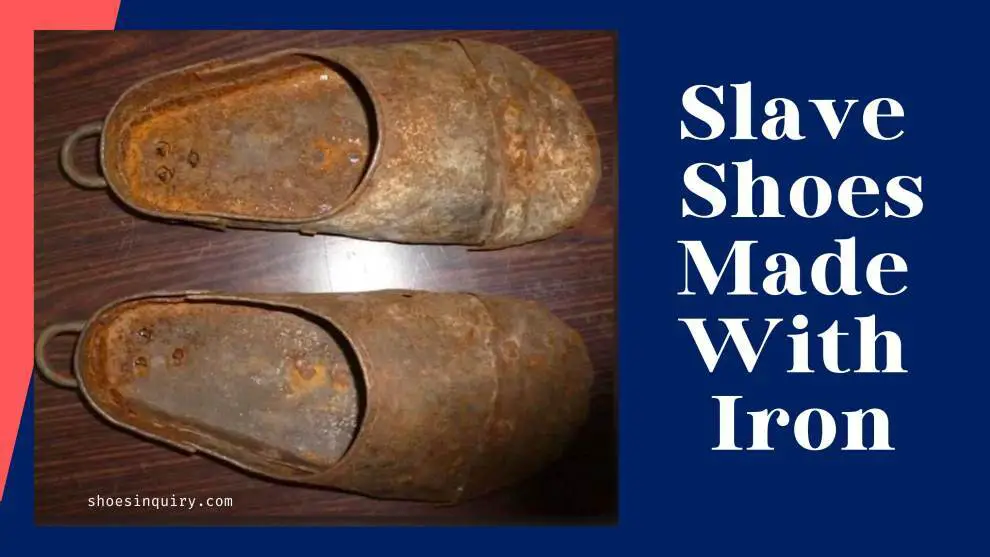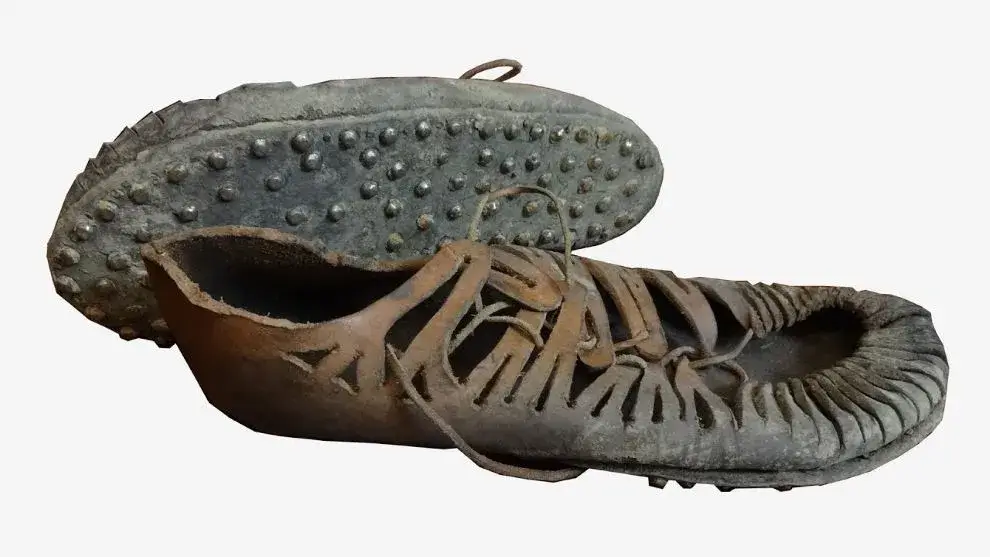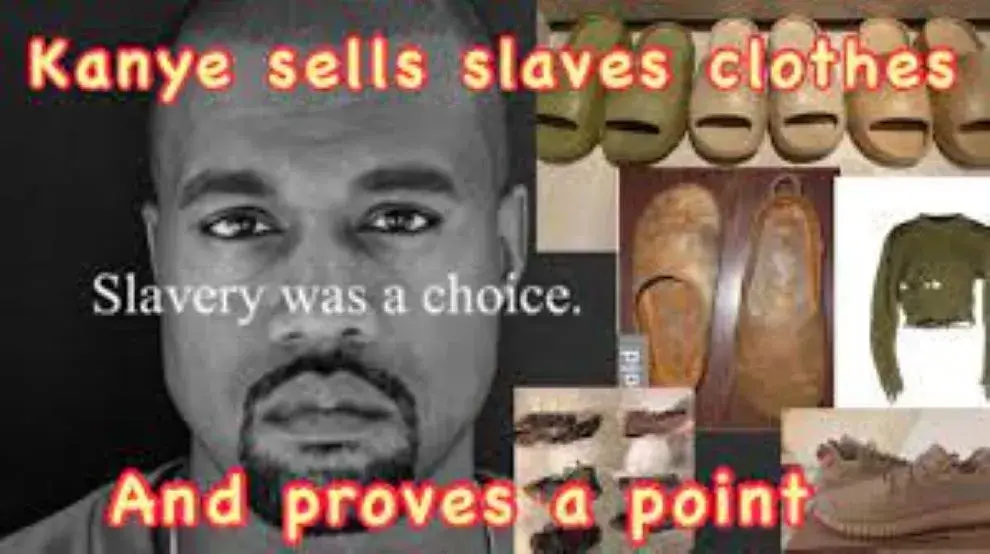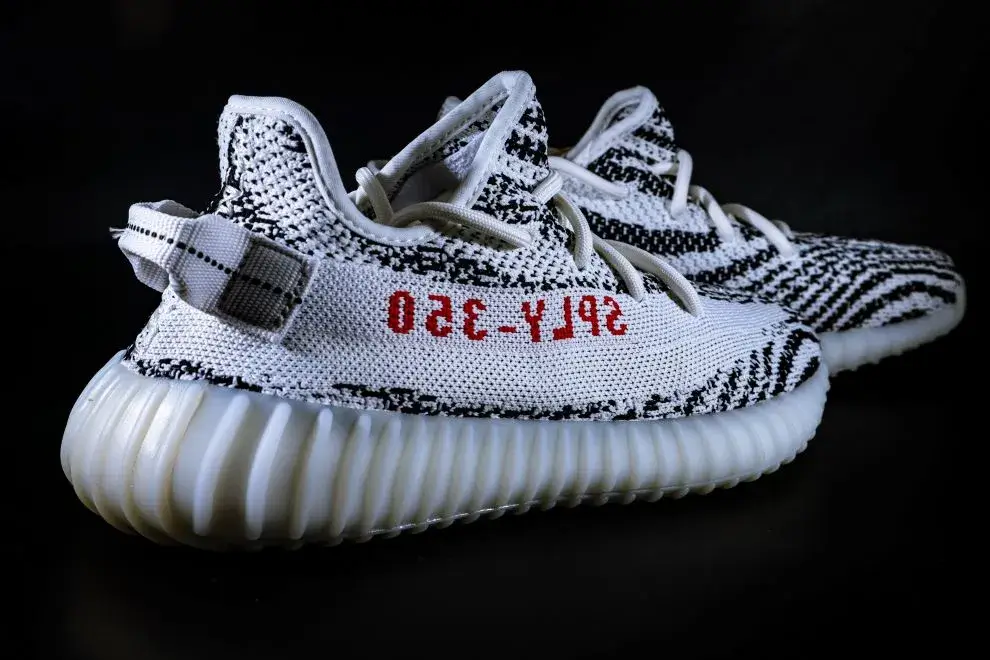Introduction
When someone thinks about Yeezy, the one name that comes to your mind is Kaneya West. He created this brand and made it popular with his unique vision and huge influence in America.
Yeezy shoes are more than just footwear; they’re a statement. Check out their history, innovation, and why they’re a must-have for sneaker enthusiasts.
Recently, Yeezy caused a big fuss in the media. Kanye West said something really controversial about slavery. This upset many people on social media, including human rights activists and fans, who want Adidas to stop working with West.
During a talk with TMZ Kanye West stated that he believed people chose to be enslaved for 400 years.
In this article, we’ll talk about Slave Shoes vs Yeezy . These two shoes represent more than contrasting styles. They have different values and history.

Slave shoes bring back memories of a tough time when people were treated unfairly. Meanwhile, Yeezys are all about looking cool and stylish. We’ll also discuss the controversy surrounding Kanye West and Slave Shoes vs Yeezy.
Besides, We will try to understand how culture and history shape our choices by exploring the origins, significance, and social implications of these shoes.
Table of Contents
- Introduction
- Slave Shoes vs Yeezy Controversy
- Understanding the Two Concepts and Definition of slave shoes.
- Definition of Yeezy
- Social Implications of Slave Shoes and Yeezy
- Ethical Implications of Slave Shoes and Yeezy
- How Slave Shoes and Yeezy Represent Different Periods In Fashion History
- How Slave Shoes And Yeezy Represent Different Attitudes Towards Social Justice
- Similarities and differences between the two
- The Cost of Yeezy Shoes
- Educating and promoting conscious consumption:
- Raising Awareness
- Shaping the Future
- Final Verdict
Slave Shoes vs Yeezy Controversy

You might have heard about the controversy of Yeezy slave shoes.
Slave Shoes were made when people were treated badly in the old era. These shoes remind us of a time when people didn’t get paid fairly. Even people were forced to work.
Yeezy is a modern and stylish shoe. But some people wonder if the workers who make Yeezys get good pay and if Yeezy shoes are nice to our planet.
Even though Yeezy isn’t directly like Slave Shoes but we can still examine Yeezy slave shoes comparison. It will help us wonder about Yeezy’s fairness and kindness.
Often, people get questions like, are the workers who make Yeezys treated well?
We want to make sure workers get good pay and work in safe places. We also want to make sure our shoes don’t hurt the Earth. People are getting smarter about these things. They want to know where their shoes come from.
They want to be sure that when they wear cool shoes like Yeezys, they’re not forgetting the lessons of the past of Slave Shoes. If we think that way, we can stay grateful for the lessons from the past.
Understanding the Two Concepts and Definition of slave shoes.
Slave shoes refer to footwear that was made specifically for enslaved people during the time of slavery in America. These shoes were often made from cheap and uncomfortable materials. And they were designed to be worn for long hours of manual labor.
The term “slave shoes” is used today to describe any shoes that are uncomfortable or cheaply made. Also symbolizes the past’s oppressive and exploitative labor practices.
While we may no longer use this term to describe actual shoes worn by slaves. But we can never forget the hardships and injustices that people have faced throughout history.
Definition of Yeezy

Kanye West, a well-known singer and businessman, founded the clothing and footwear brand Yeezy. As a brand, Yeezy won’t disappoint you. Because they can give you comfort, elegance, and style with their footwear.
Global fashion fans are drawn to the brand’s distinctive designs because of their basic aesthetics, neutral hues, and futuristic accents.
Yeezy collections have apparel, footwear, and accessories that show unique textures and materials. The brand’s pieces are designed to empower wearers with a new level of confidence and self-expression. Because of that, they are a favorite to people, athletes.
In short, Yeezy is not just a product but a representation of Kanye West’s journey toward becoming a renowned creative force and innovator in the fashion industry.
Social Implications of Slave Shoes and Yeezy
The social implications of slave shoes vs Yeezy can be examined through their impact on human trafficking and the environment.
Slave shoes are made in bad working conditions and workers are not paid. This type of production can lead to human trafficking. Yeezy harms the environment through mass production methods.
This causes pollution and increases the carbon footprint. Companies need to be transparent, pay fair wages, and work in safe conditions. They should also use eco-friendly production methods.
Supporting ethical fashion brands and demanding better practices can create a more sustainable world. I will also talk more about it in yeezy slave shoes comparison.
Yeezy slave shoes illustrate the need for more transparency and moral standards. Also, it shows the drawbacks of the fashion industry’s reliance on low-cost labor and mass-production techniques.
Ethical Implications of Slave Shoes and Yeezy

The production of slave shoes and Yeezy has ethical problems. Slave shoes are often made in bad working conditions where workers are not treated fairly. They work long hours, are not paid well, and have no access to medical care.
Yeezy has tried to improve things but some people question its morals. There are reports of bad working conditions and low wages for employees in some of their facilities. Some say Yeezy does not care about safety and fair treatment for workers.
Both slave shoes and Yeezy show how important it is for the fashion industry to treat workers fairly and follow ethical standards.
How Slave Shoes and Yeezy Represent Different Periods In Fashion History

Slave Shoes vs Yeezy represents two different periods in fashion history. Slave shoes are associated with the globalization of fashion in the late 20th and early 21st centuries.
Slave Shoes vs Yeezy represents a more contemporary approach to fashion that emerged in the mid-2010s. The tragic history of forced labor and exploitation in the fashion industry is reflected in slave shoes.
Slave shoes were produced under cruel and insecure working conditions, from sweatshops in Southeast Asia to cotton fields in America.
Due to the globalization of the fashion industry in the late 20th century, slave shoes and other products were made under comparable conditions. This issue remains widespread and has yet to be fully addressed.
Yeezy represents a modern breakthrough in the world of fashion that highlights creativity, exclusive releases, and celebrity endorsements. In 2015, the company was founded and has grown thanks to the distinctive designs of its goods and the fame of its founder, Kanye West, quickly.
However, Yeezy’s reputation has also been tarnished by complaints about its factory’s poor working conditions, high costs, and restricted supply.
Overall, Yeezy and slave shoes symbolize two distinct eras in the history of fashion. These shoes highlight the complexity and evolution of the sector as well as the necessity to address social justice and ethical standards in the creation of clothing.
How Slave Shoes And Yeezy Represent Different Attitudes Towards Social Justice
Slave Shoes and Yeezy Shoes show two very different views on fairness in the fashion world.
Slave Shoes are connected to unfair treatment and making people work very hard in bad conditions for very little money. This is really bad because it doesn’t follow the fairness rules we have for everyone, no matter how rich or poor they are.
On the other hand, Yeezy does things a bit differently. Even though some people don’t like how it makes its products in limited numbers, many people love its unique styles and efforts to protect the environment. Yeezy also gives some of its money to help make things fairer in society. For example, Yeezy helps people in prison and families affected by gun violence.
Slave Shoes vs Yeezy demonstrate different attitudes toward social justice in the fashion industry. In short, Slave Shoes doesn’t treat people fairly, while Yeezy tries to balance fashion with fairness by giving back to those in need.
Similarities and differences between the two
Slave Shoes and Yeezy have both similarities and differences that reflect the fashion industry’s complexity and the need to consider social justice and ethics.
Similarities:
- Both types of fashion have social and ethical implications, meaning they affect how people are treated and what is considered right or wrong.
- Slave shoes are linked to modern-day human trafficking and forced labor. Meanwhile, Yeezy’s production has been criticized for its work conditions and impact on the environment. So, they both have problems related to how they are made.
Differences:
- One big difference is the price. Slave shoes are usually sold very cheap, even if they cost a lot to make. Yeezy is known for being very expensive and luxurious.
- Another difference is when they came about. Slave shoes have been around for a long time. They have shown unfair treatment and forced labor in the past. Yeezy is a more recent fashion that focuses on unique designs and limited releases.
Slave shoes vs Yeezy are different in their prices when they came into fashion and how they treat workers. But they both make us think about fairness and what’s right in fashion.
The Cost of Yeezy Shoes

The price of Yeezy shoes can vary a lot. For Yeezy clothing like sweatpants and jackets, you might pay anywhere from $600 to a really high $3,000 for fancier stuff.
Now, let’s talk about Yeezy sneakers.
Normally, Yeezy shoes cost around $220 when you first buy them in a store. But because they’re super popular and only sometimes easy to find, some people buy them and sell them for much more.
Keep in mind, though, that Yeezys aren’t just expensive; they’re also a big deal in the world of fashion and sneakers. In fact, they make billions of dollars in sales for Adidas each year. That is a huge part of the company’s money.
So, even though they’re pricey, lots of folks are willing to get their hands on Yeezy. Because it’s not just shoes, it’s also a status symbol and a big part of fashion and sneaker culture.
Educating and promoting conscious consumption:
In today’s world, it’s important to promote being a conscious consumer when it comes to buying shoes. This includes understanding the difference between slave-produced shoes and brands like Yeezy. To make choices that align with your values, you need to learn more about the issue.
By learning about the history and realities of slave-produced shoes, you can understand how they are made and why this is a problem. This can be done by watching documentaries, reading articles, or following social media campaigns that talk about the bad practices used in making shoes.
It’s essential to educate consumers about the conditions under which slave-produced shoes are made. This means explaining the human rights violations and inequalities that happen in this industry.
Raising Awareness
There are several ways we can people can raise awareness around the world. Make sure you read this below for better understanding.
- Know the Facts: Learning the history and truth about shoes made by exploited workers and Yeezy Shoes helps us understand why it’s important to care about how shoes are made.
- Learn from Documentaries: There are videos online that show the not-so-good side of making shoes, especially slave shoes. These videos can really make us think about the problem.
- Read Articles: Some articles tell us a lot about how making shoes can be unfair. They talk about how it’s not right and suggest supporting brands that are kinder to workers.
- Spread the Word on Social Media: Using special words on social media and sharing posts about fair shoe making can help more people know about the issue.
- Make Better Choices: When we know the truth, we can make better choices when we buy shoes. We can choose to support brands that do the right thing.
- A Better Fashion World: Learning and telling others can make the fashion world better. It can be fairer and kinder to everyone.
Shaping the Future
To create a better future for the shoe industry, we need to focus on fairness and taking care of our planet. This means we should stop using unfair ways to make shoes and start doing things that are better for people and the environment. Brands need to make fairness a big part of what they do.
People who buy shoes also have a big role to play. They can support brands that treat people and the environment well. It’s important for people to learn about how their choices affect others.
Everyone, including shoe-makers, buyers, and groups that fight for what’s right, should work together to make a change. By doing things like trading fairly and thinking about what’s right, we can make the shoe industry fairer and better for the future.
Final Verdict
Slave Shoes vs Yeezy highlights the complexities of fashion and the need to address social justice and ethics.
Slave shoes are about exploitation and forced labor, while Yeezy raises worries about how people work and the environment.
Both types of fashion make us think about what’s right and how we treat others when making clothes. We need to remember that our choices can affect workers and the world around us.
To make things better, we must be mindful of what we buy and push for changes in the fashion industry. We should all work together to create a fairer and more ethical fashion world.
By caring about fairness, each of us can make fashion better for everyone.
